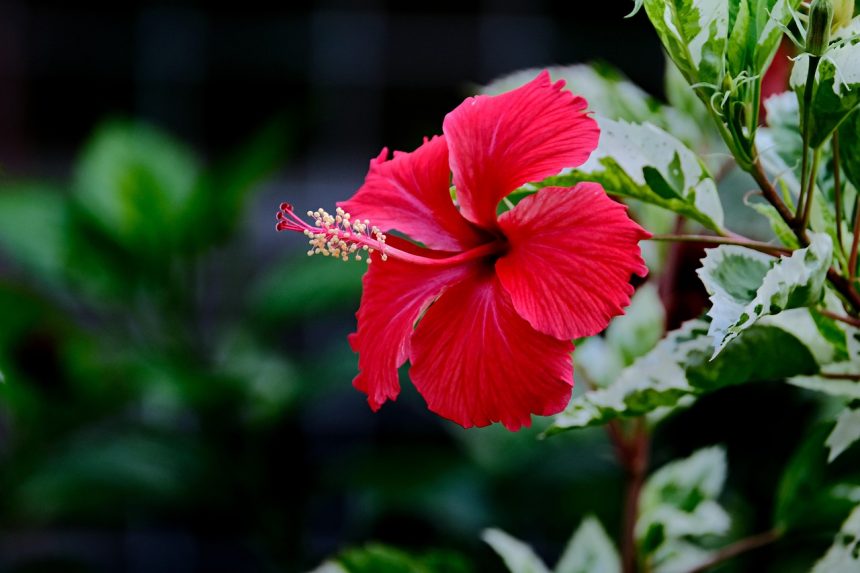So you’ve read my post on the growing importance of Identity Diversification and now you’re wondering what it actually takes to prove your ethnicity and heritage. Doing so can help you better navigate the shifting socioeconomic winds of society and, in some cases, even improve your odds of getting into school, landing a job, winning a deal, winning an award, or earning a promotion.
Just as diversifying your investments helps you weather any economic climate, diversifying your identity can help you adapt to the social changes ahead. At the very least, it’s a meaningful way to reconnect with and preserve your roots, something that could otherwise fade with time.
Over the next 13 years, my children and I plan to deepen our understanding of Hawaiian language and culture. By 2029, we may even move back to Honolulu for their middle and high school years.
Here’s what it took for me to officially document my Hawaiian ethnicity and heritage, and secure proof for my children. The process wasn’t expensive, but it was surprisingly time-consuming and bureaucratic.
During my five weeks in Honolulu in the summer of 2025, I juggled a mix of responsibilities: remodeling my parents’ in-law unit, working through old childhood memories, enrolling my children in summer school to learn Hawaiian language and culture, and finally, proving my Hawaiian ancestry.
Here are the exact steps I had to take:
1) Make An Appointment at the Department of Health
I started by trying to book an appointment online with the Hawaii Department of Health. Unfortunately, the scheduling tool wasn’t working, so if it doesn’t work for you, you have to show up during the walk-in windows below.
Oahu Location Details
- Days: Monday–Friday (except State holidays)
- Hours: 7:45 a.m.–2:30 p.m. (appointments required, walk-ins only as time permits)
- Address: 1250 Punchbowl Street, Room 103 (corner of Beretania and Punchbowl Streets)
- Parking: Metered, $2/hour, cash or credit accepted
- Marriage License Office: 8:00 a.m.–4:00 p.m.
- Correction & Registration Office: 7:45 a.m.–2:30 p.m.

2) Order Vital Records Online
Next, I went to the Vital Records portal to request the certificates. You must list your relationship to the person whose record you’re requesting. Strangely, there was no option for grandchild or great-grandchild, so I chose nephew instead—a problem I’ll explain shortly.
Each record (birth, death, or marriage) costs $12.50. It’s smart to order at least two, preferably three – one for the school or job application, one for yourself, and a backup. Only official certified copies are accepted.
To establish lineage, I needed my grandmother’s birth or death certificate (to show her race) and my father’s birth certificate (to confirm the link), and then my own birth certificate. This paper trail would give my kids a tangible connection to their heritage.
When I got to the Department of Health, it turns out they had a couple tourist where I could order the vital records there while I waited.

3) Visit the Department of Health in Person
After waiting 45 minutes, feeding the meter again ($4 + $4), and finally reaching the counter, I asked for my father’s and grandmother’s certificates I’d booked online. The clerk refused to release them because I couldn’t prove on the spot that I was my father’s son.
Oh snap! I guess I should’ve brought my dad along after dropping my kids off at summer school. It never occurred to me that showing my government-issued driver’s license wouldn’t be enough. After 1.5 hours, the last thing I wanted was to go home, make another appointment, and drag my dad back.
Thankfully, there was a workaround. The clerk said my 79-year-old dad could write a letter confirming he was my father, attach a copy of his ID, and email both to me and the clerk. The only problem? I wasn’t sure if he was at home or already off to his 9:30 a.m. exercise class. He doesn’t carry the iPhone I gave him, nor does he check messages regularly.
Luckily, he was still home, and my wife was there too. I called her and asked her to help my dad write the letter, snap a photo of his ID, and send everything over. For good measure, I even had my dad hold up the letter like a felon holding a booking placard, just to prove authenticity.
After about 30 minutes of coordination (and continued stress), my wife came through. Two hours after arriving, I finally fulfilled all the clerk’s requests and could breathe again. At last, I was going to get my grandmother’s and dad’s vital records. Hooray!
Another Curveball Thrown
After the clerk printed out my dad’s birth certificate and stamped it with an official seal, he noticed it only listed him as Chinese, even though my grandmother’s listed Chinese/Hawaiian. That meant his record needed an official amendment. Nooooo!
Normally, this would take one to two weeks, but since I was flying back to San Francisco the next week, the clerk kindly agreed to rush it once I provided my flight itinerary. So I had to then sit back down, get my official itinerary and e-mail it to the clerk, and wait for my turn to get called back up again.
Nearly three hours later, I finally had the documents in hand.
Lesson: You’ll need proof of kinship (or have the person present) to obtain their vital records, all in the name of privacy protection.
You can request to have the records mailed, but given the hurdles I had to jump through, I’m not sure they would’ve ever arrived. Besides, by that point, I was ready to celebrate with some lychee and pirie mango from ABC Market in Chinatown, just a short drive away.

4) Contact the Department of State for My Birth Certificate
Back home, I felt satisfied that I had helped my father secure proof of his Chinese/Hawaiian heritage. Ironically, at 79, he didn’t even care. He’s lived a full life and his ethnicity doesn’t affect him now.
But my journey wasn’t over. Because I was born in Manila, I also need to request my Consular Report of Birth Abroad (CRBA) from the U.S. Department of State to show my dad’s name on my birth record. Whether I need an amendment depends on what the official copy says. The hospital record my parents kept only listed my race as “Yellow.” A fascinating glimpse into the past.
Once I secure my CRBA, my kids should be covered. They’ll have the documented proof—stretching from my grandmother, to my father, to me—that confirms their Hawaiian lineage.
Total Cost And Time To Prove Our Hawaiian Ancestry
Overall, I will have spent about $150 and five hours of time proving our Hawaiian heritage, and I’m not 100% done yet.
Instead of gathering all this documentation, I understand why so many people just say they are a certain race without proof. And frankly, it seems to have worked for many people, including Senator Elizabeth Warren.

Feeling Like You Belong Is Great
Getting official documentation that proves I’m Hawaiian brings a deep sense of pride. It also reinforces a feeling of belonging – especially when returning to Hawaii, which is not always welcoming to outsiders. You should see some prickly comments from Hawaii residents I have from previous posts about potentially returning to Hawaii.
Knowing your ancestry affirms that you deserve to be there, even if others might sometimes treat you as an outsider after living away for years. Even non-Native Hawaiians may treat you poorly if you plan to relocate there.
In my case, I don’t feel out of place when I return. My grandparents were born in Hawaii, my grandmother was half Native Hawaiian, our family has owned property on Oahu and paying local taxes for a century, and I’ve been visiting regularly for the past 48 years.
I understand why some local Hawaiians can resent outsiders returning, since newcomers may drive up housing costs, compete for limited school spots, and add to the already heavy traffic.
If we move back in 2029, my goal is to minimize our impact by living in my parents’ house or their in-law unit and driving my dad’s 28-year-old beater. In fact, that’s exactly how we lived for five weeks during our last stay. But I’d probably buy a newer car by then for safety reasons.

Financial Benefit Of Being Hawaiian
The only relevant financial benefit of being Hawaiian for my family is my children’s ability to apply to Kamehameha Schools in Hawaii. They are fantastic schools with great facilities and much lower tuition of $8,000/year versus $32,000 a year for similar independent schools on Oahu. Similar schools in San Francisco cost $45,000 – $65,000/year.
Princess Bernice Pauahi Bishop established the endowment for Kamehameha Schools with her will and testament, signed on October 31, 1883. The endowment, which was her entire estate, including vast landholdings in Hawaiʻi, was set to be used for the education of Native Hawaiian children after her death in 1884. The schools officially opened in 1887, with the endowment continuing to fund the schools and associated programs to this day. Today, the endowment is worth over $15 billion.
Hence, if both my children were to get in now, we could easily save over $600,000 in independent school tuition until they graduate. However, only about 8% of applicants get in. Further, I’m somewhat conflicted on applying because the Kamehameha School on Oahu has a large portion of their students from less wealthy backgrounds. So to take away one or two spots, if my kids get in, doesn’t feel quite right, especially if we are school donors at a more expensive school.
Being Hawaiian And Getting Into College
I’m not sure being Native Hawaiian is beneficial for college admissions as often times, they are lumped together as “Asian Pacific Islander.” However, obviously, Hawaiian culture and Chinese/Japanese/Korean/Taiwanese etc culture are vastly different. So perhaps there is some benefit of being Hawaiian for diversity purposes.
Two of my relatives applied as Native Hawaiians and attended Princeton and Brown. So I guess it can’t hurt.
Who knows when the next big DEI push will come back in full force. But like any good investor knows, diversification is key. If you’re fortunate enough to have a multi-ethnic background, it’s worth embracing every part of it as you prepare for an uncertain future.
Excited To Return To Hawaii
Our latest plan is to return to Honolulu, Hawaii by 2029, when my son can enter in the 7th grade and my daughter can enter in the 4th grade. These are the two main entry points that match up for a school we’d like our children to go to. The biggest variable is one or both not being able to get in.
So my hope is that by sending both children to summer school every year before they apply to that school, it shows we are a committed family who loves the school. In the meantime, we plan to learn as much Hawaiian language and culture as possible every summer and winter we go back.
Readers, ave you ever been asked to prove your ethnicity? If so, what was the process like—expensive, time-consuming, frustrating? And more broadly, where should the line be drawn? Should there be a minimum threshold before someone can claim an ethnicity? Or does the old “one-drop rule” still hold—where even the slightest connection counts?
Subscribe To Financial Samurai
Pick up a copy of my USA TODAY national bestseller, Millionaire Milestones: Simple Steps to Seven Figures. I’ve distilled over 30 years of financial experience to help you build more wealth than 94% of the population—and break free sooner. Once you have enough money, you can do more of what you want and not have to worry about identity diversification.
Listen and subscribe to The Financial Samurai podcast on Apple or Spotify. I interview experts in their respective fields and discuss some of the most interesting topics on this site. Your shares, ratings, and reviews are appreciated.
To expedite your journey to financial freedom, join over 60,000 others and subscribe to the free Financial Samurai newsletter. You can also get my posts in your e-mail inbox as soon as they come out by signing up here. My goal is to help you achieve financial independence sooner, rather than later.
The Cost To Prove Your Ethnicity And Heritage: Hawaiian Edition is a Financial Samurai original post. All rights reserved.







